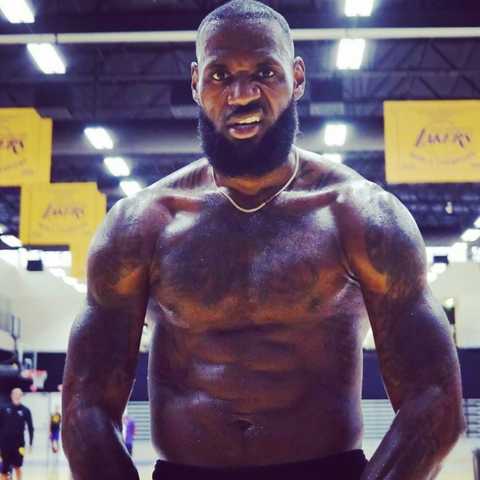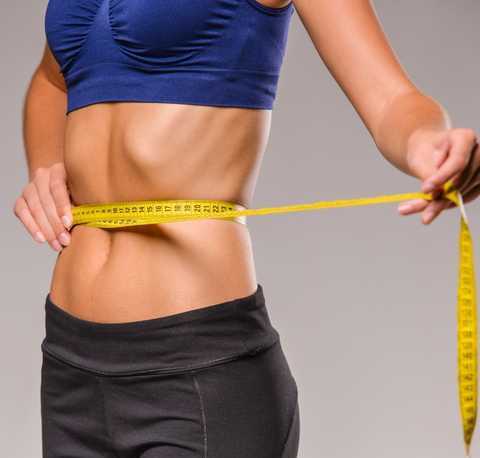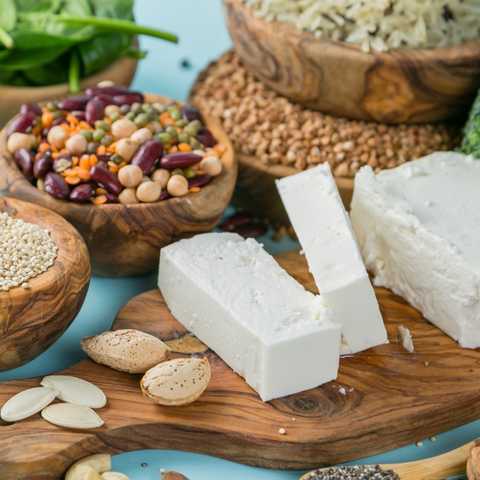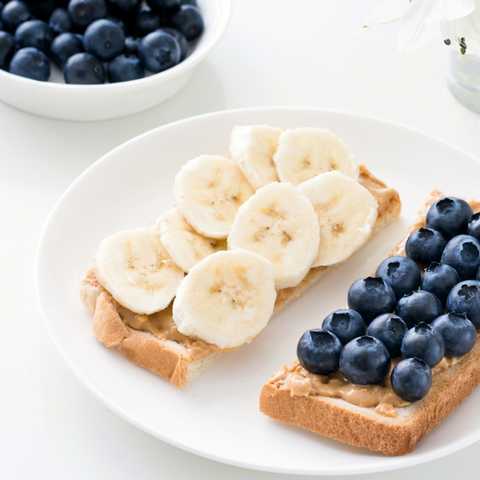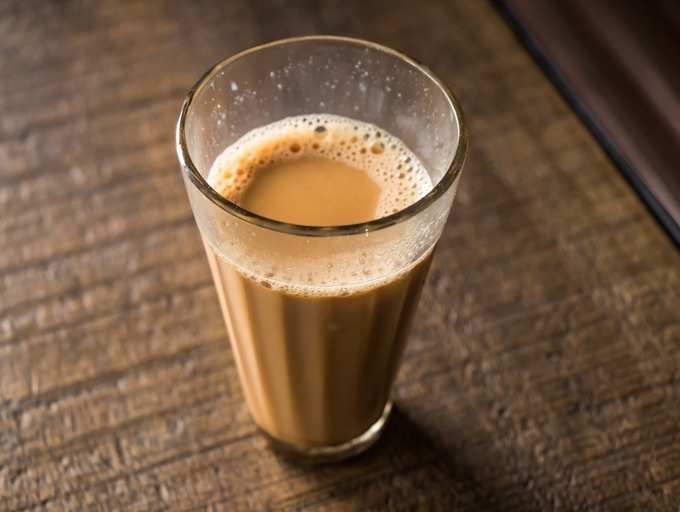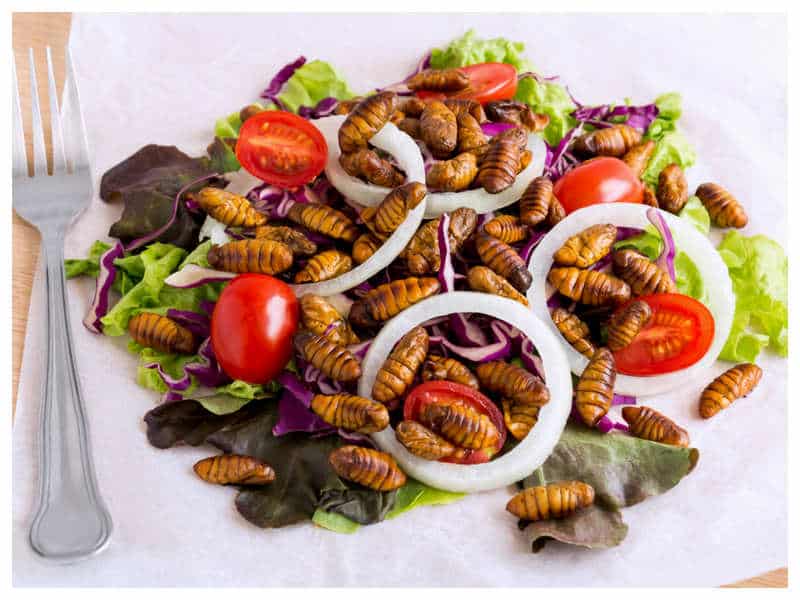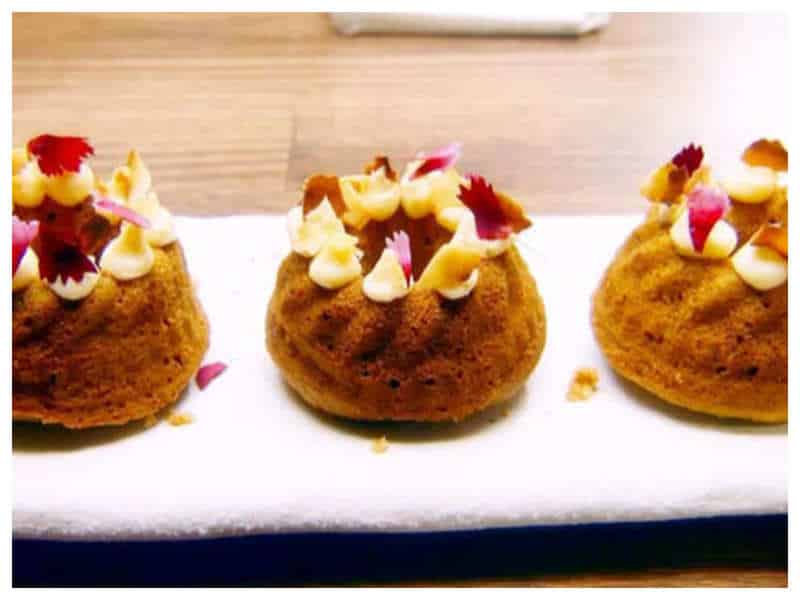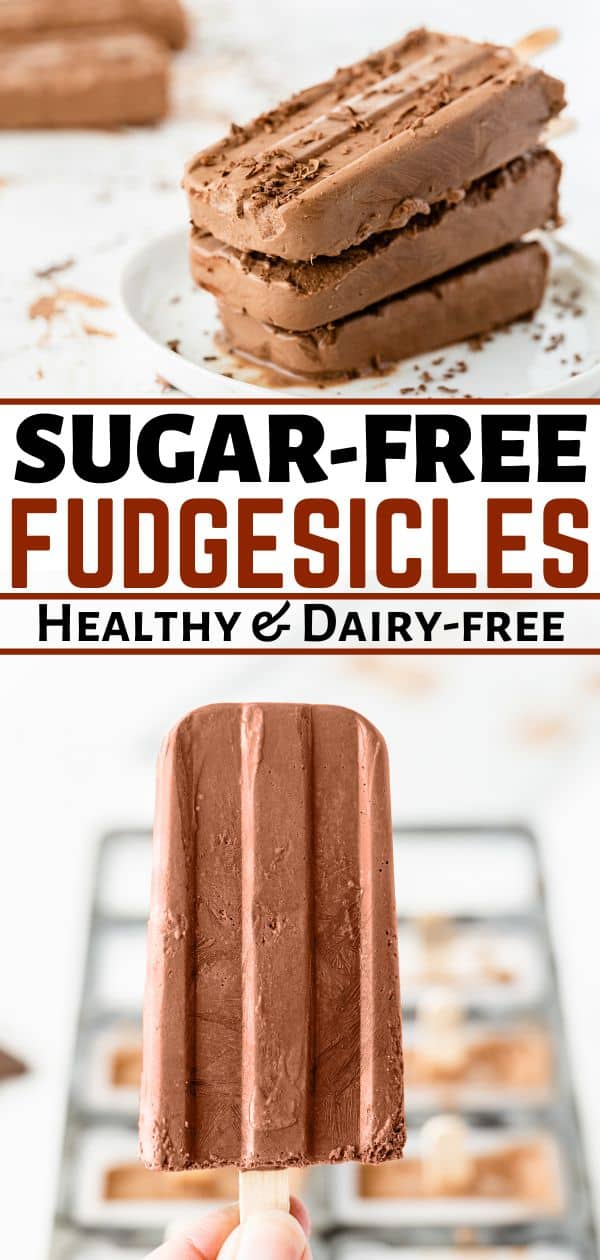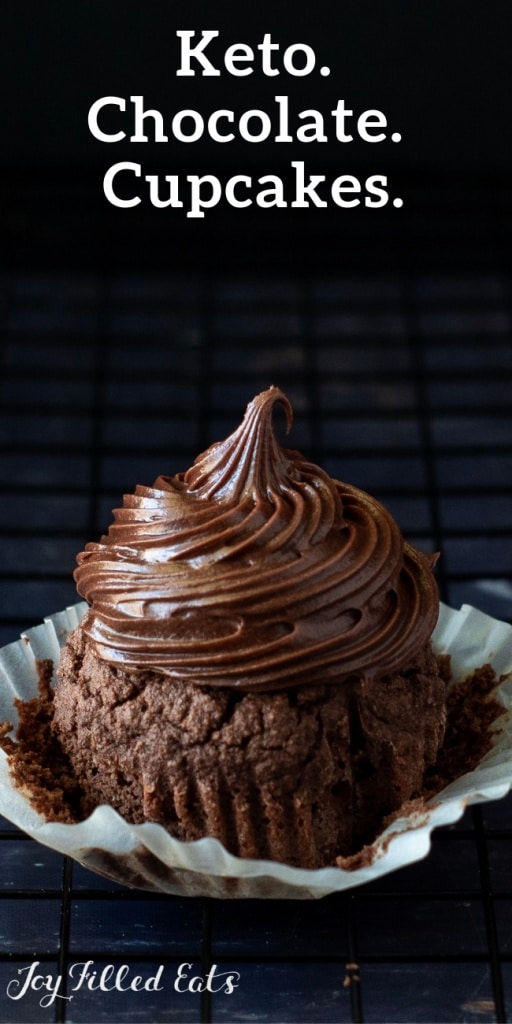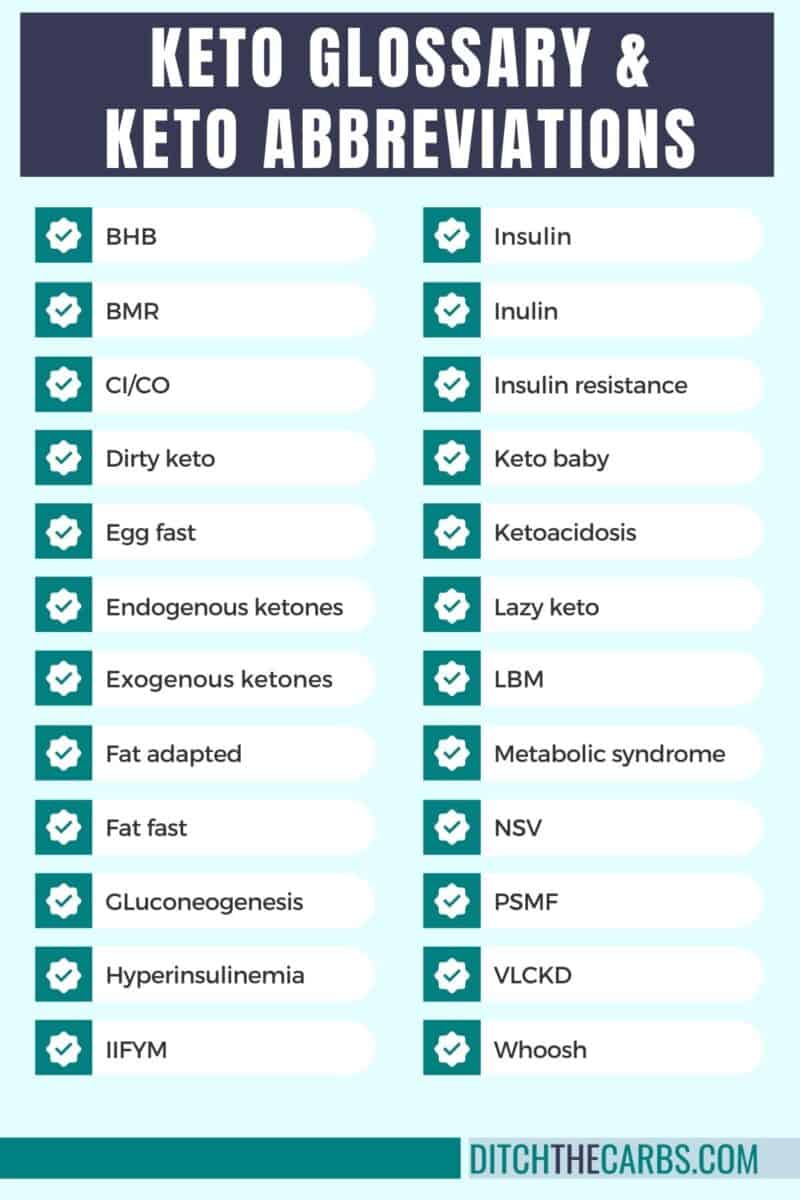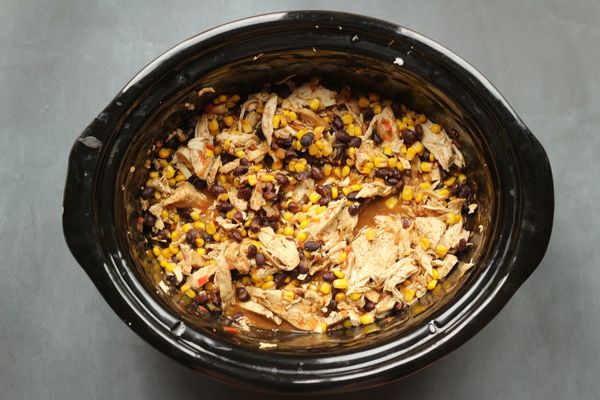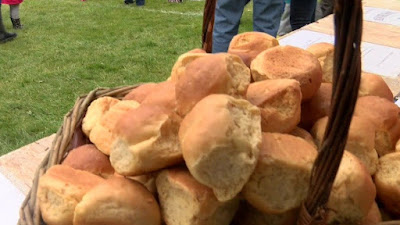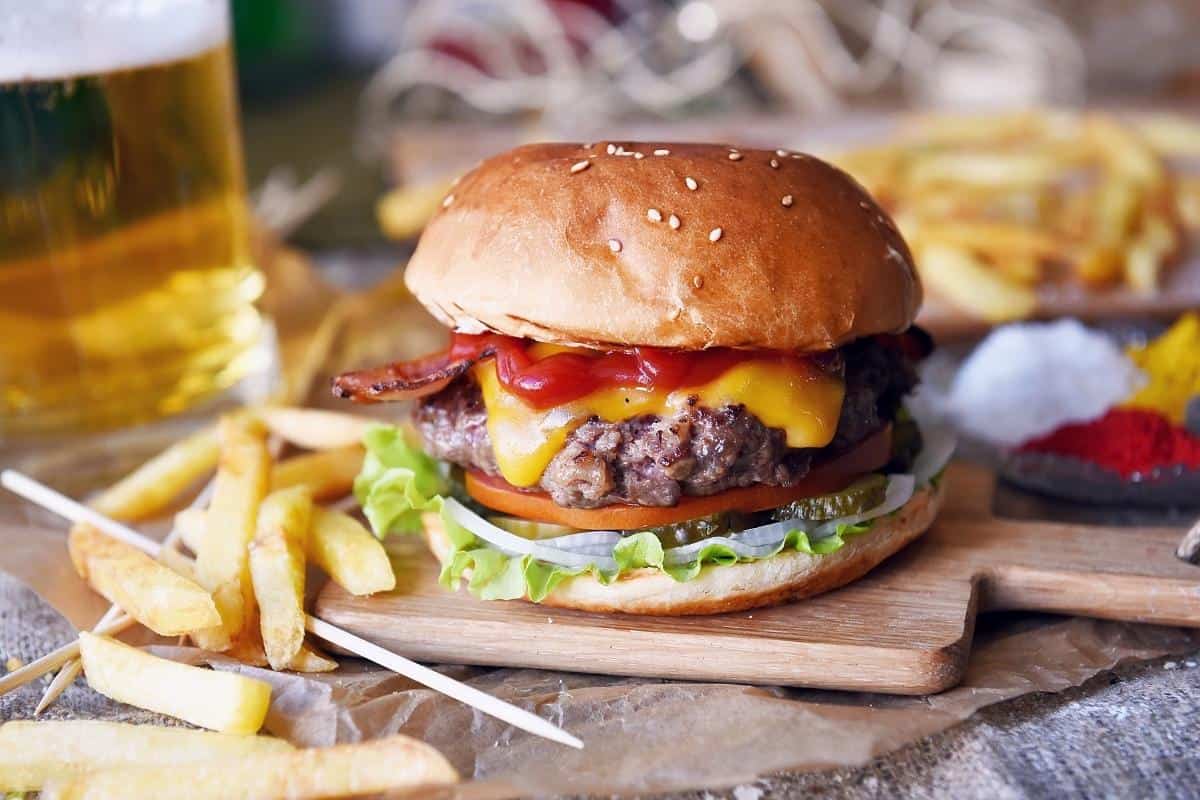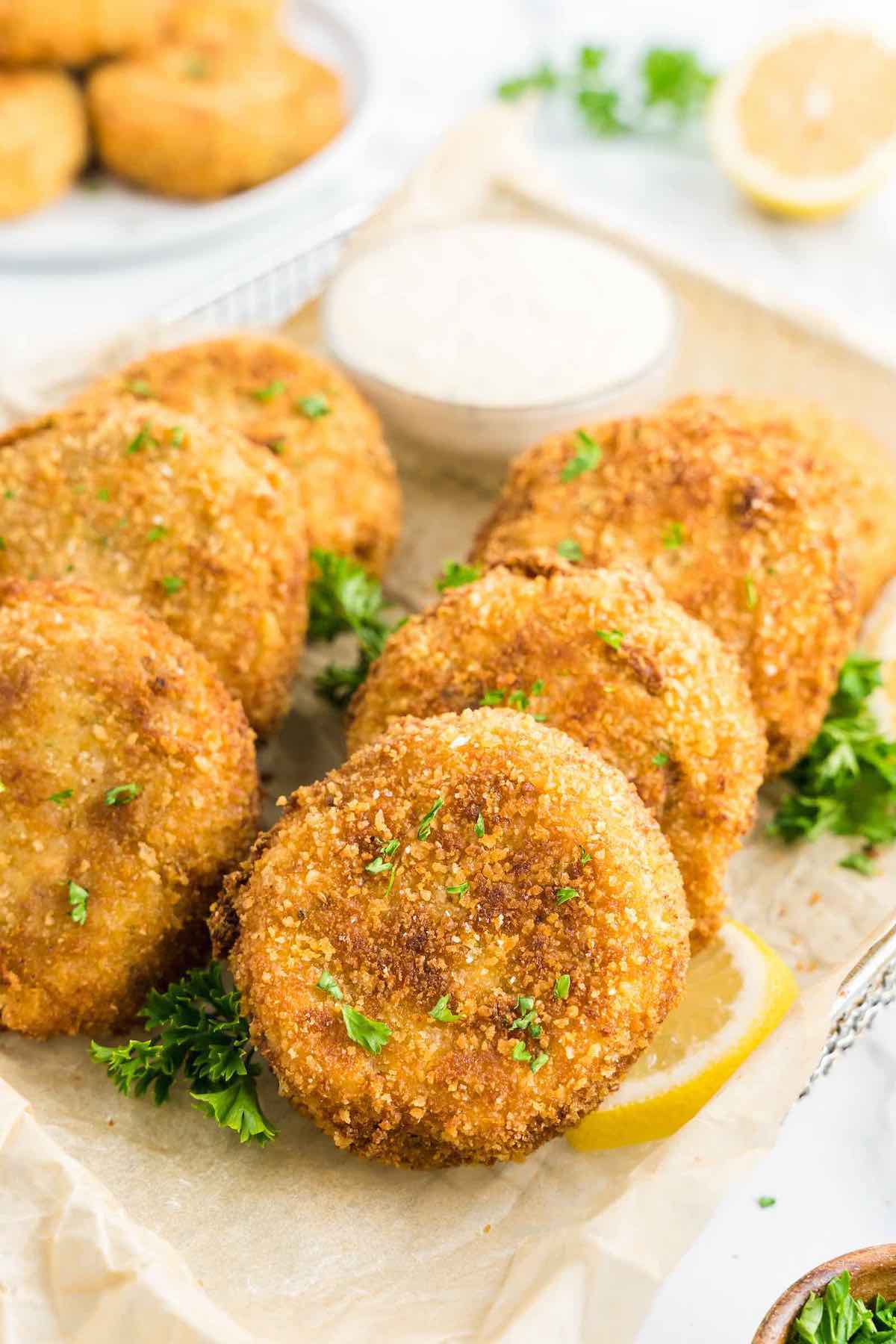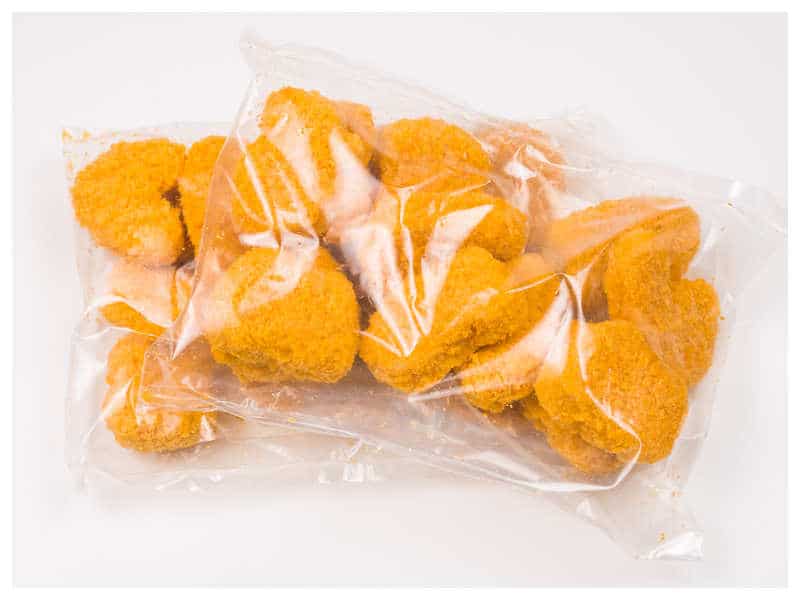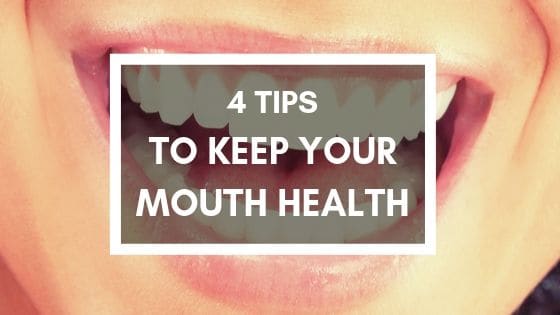The formula to lose fat is simple. Eat healthily, avoid processed junk, and maintain a calorie deficit. But there is a reason why the weight loss industry is worth billions of dollars. Knowing what to do and actually doing it are two different things.
Enter carb cycling.
On the surface, carb cycling is similar to many other successful diets. Because at the end of the day, calorie intake dictates body composition changes. However, there’s no denying that eating the same thing every day for weeks at a time can be downright dull.
Manipulating carbohydrate intake is a great way to keep your diet interesting. And the best part is carb cycling is not exclusive to fat loss. You can also use carb cycling in place of a traditional muscle-building diet.
So, if this sounds appealing, read on as we dig into everything you need to know about creating a bodybuilding carb cycling meal plan.
Table of Contents:
- What Is Carb Cycling?
- How Does Carb Cycling Work?
- How Many Carbs Should You Eat Per Day Following a Carb Cycling Diet?
- Different Carb Cycling Schedules You Can Follow
- Foods To Eat On High-Carb Days
- Foods To Eat On Low-Carb Days
- Are There Foods You Should Completely Avoid On A Carb Cycling Diet?
- Benefits of Carb Cycling
- Carb Cycling Diet Drawbacks
- Is Carb Cycling Beneficial For Bodybuilders?
- Your Daily Macros & Calories Following The Carb Cycling Meal Plan
- Your 7-Day Carb Cycling Meal Planning Grocery List
- Your 7-Day Carb Cycling Meal Plan For Muscle Building
- Your 7-Day Carb Cycling Meal Plan For Cutting
- What To Do After Following These 7-Day Carb Cycling Meal Plans
- How Long Should You Follow a Carb Cycling Diet?
- FAQs

What Is A Carb Cycling Diet?
Carb cycling is a diet that involves strategic increases and decreases in carbohydrate intake throughout the week. It started in the bodybuilding community but has expanded into the general public.
Although carb cycling is typically used for weight loss, it can also build muscle and improve athletic performance.
There are various ways to set it up. Some carb cycling protocols keep calories constant, while others cycle calories and carbohydrates. Some rotate between it being a high carb diet and low carb diet, with high and low-carb days, while other methods also sprinkle in moderate carbs.
Since carb cycling involves hitting specific macronutrient targets throughout the week, it pairs well with flexible dieting such as what we see with plans like the metabolic confusion diet.
How Does Carb Cycling Work?
Generally, a carb-cycling diet is set up to complement your workout split. For example, you eat more carbs during intense training and fewer carbs on easier workouts or rest days.
The idea is to get the best of both worlds. We know carbohydrates help fuel exercise performance, so we lean into that by having high carbs around demanding workouts.
However, having high carbs all of the time can be a recipe for disaster. A workaround for this is to make your carbohydrate intake lower on days when your activity decreases.
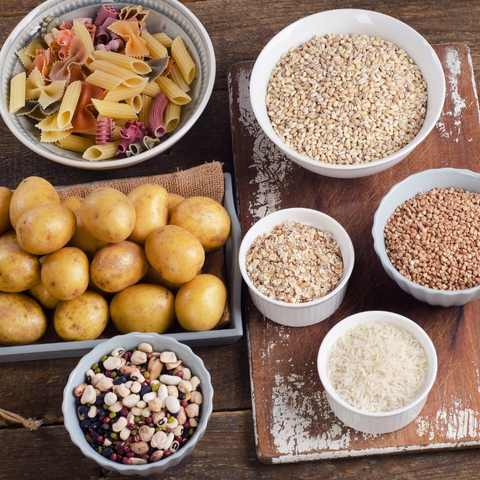
How Many Carbs Should You Eat Per Day Following a Carb Cycling Diet?
The number of carbohydrates you eat following a carb-cycling diet will be personalized based on your body composition goals, body size, and activity level. It also depends on what type of carb-cycling diet you are following.
That said, the fundamental rule with carb cycling is to make sure there is enough change between high and low-carb days to make a notable difference. It’s difficult to put a number on it, but based on personal experience, there should be at least a 75-gram difference in carbohydrate intake between low and high days.
Aiming for over 100 grams difference is even better. If the difference in carbohydrate intake is too small, you may not see the results you’re looking for.
4 Different Carb Cycling Schedules You Can Follow
You can follow a nearly endless amount of carb cycling schedules. However, here are the four most common.
Option #1: The Standard Carb Cycling Diet
This traditional carb cycling diet alternates between low, medium, and high-carb days throughout the week. With this setup, the medium-carb days are the base diet. From there, high-carb days are implemented around 1-2 of your most challenging workouts of the week, and rest days are low-carb.
Option #2: Cyclical Keto Diet
The cyclical ketogenic diet (CKD) is a keto bodybuilding diet that utilizes carb cycling. For a CKD, you follow a traditional keto diet maintaining a carb intake under 50 grams daily for five or six days. From there, you implement one or two high-carb days.
Option #3: Low-Carb Rest Days
One of the most straightforward carb-cycling diets involves lowering carbohydrates on rest days. With this style of carb cycle, you can reduce calories on rest days, too, or replace carbs with healthy fats, keeping your calorie intake the same.
During muscle-building phases, keeping your calorie intake the same works well. This is the setup outlined in the 7-day muscle-building diet below.
Option #4: The Refeed Method
Refeeds are a form of carb cycling with higher calorie and carbohydrate days implemented during a fat-loss diet. Refeeds typically last one to three days. The key to refeeds is increasing calories along with carbohydrates.
During a fat loss diet, the calories on the refeed days must be at least at the individual’s estimated maintenance intake. This means that if your maintenance calories are 2,200, you will design your carb cycle so you’re eating at least 2,200 calories on refeed days and less than this on the remaining days.
The 7-day fat loss diet outlined below utilizes the refeed model for carb cycling. We’ll talk about it in more detail shortly.

Best Foods to Eat On High-Carb Days
On high carb intake days, you have the flexibility to eat foods that are high in carbohydrates. You can even have some low-fat treats.
Here are some examples:
- Most fruit: Apples, bananas, oranges, pears, etc.
- Fruit juice: Apple juice, orange juice, grape juice, etc.
- Sweet potatoes
- Russet potatoes
- Rice
- Rice cakes
- Oatmeal
- Pasta
- Bread
- Pancakes
- Frozen yogurt or low-fat ice cream
- Angel food cake

Best Foods to Eat on Low-Carb Days
On low-carb days, you want to focus on foods that are lower in total carbohydrates and higher in fiber.
Here are some examples:
- Low-carb fruit: Strawberries, raspberries, and blueberries
- Beans
- Lentils
- Low-carb bread and wraps
- Vegetables: Broccoli, asparagus, green beans, mixed greens, etc.
- Nuts and nut butter
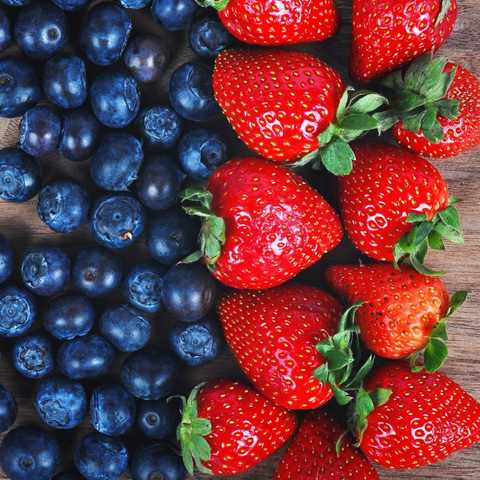
Are There Foods You Should Completely Avoid on a Carb Cycling Diet?
The best aspect of using a carb-cycling diet is diet flexibility. You don’t need to avoid anything on a carb-cycling diet besides highly processed foods that are easy to overeat.
That said, if your low-carb days get really low, you might have to avoid most, if not all high, carbohydrate foods, like whole wheat bread for example.
On the other hand, if your fat intake is low on high-carb days, you might have to choose leaner protein sources, like these high protein low fat foods, to ensure you do not exceed your allotted fat goal.
4 Benefits of Carb Cycling
It’s important to first point out that carb cycling is not magic. Following a good carb cycling diet is not the “one cool trick” that will be the secret to exponential fat loss. That said, there are certainly a few neat benefits we can take advantage of.
1. Maintain More Muscle During Fat Loss:
Although carb cycling has been popular in the fitness community for years, until recently, there has been limited research on it with experienced lifters.
One of the most relevant studies for bodybuilders came in 2020 when researchers took 27 trained individuals and split them into two groups. One group ate a standard calorie-restricted fat-loss diet every day for seven weeks1.
The other group did five low-calorie/low-carb days in a row, followed by two higher-calorie/higher-carb days for seven weeks. It’s this second group we are most interested in, as they were the ones who followed the carb cycling plan. An important point is that both groups averaged the same weekly caloric restriction.
At the end of the seven weeks, the carb-cycling group maintained more muscle than the continuous diet group, even though both groups lost the same body weight.
2. Improve Training Performance:
One of the most significant downsides of dieting is reduced training performance. After weeks in a calorie deficit, hitting PRs, achieving muscle hypertrophy, and having productive workouts can be challenging.
Luckily, improving training performance is a huge benefit of carb cycling.
The training improvements while dieting has to do with glycogen. During fat loss, stored carbohydrate in the muscle is limited. A deep dive into energy systems is beyond the scope of this article, but it’s important to know that muscle glycogen fuels weight training.
Evidence shows that even slight glycogen depletion can impact performance, even more than was once thought2. For those following a low-carb diet, this is important as implementing high-carb days as part of a carb cycling plan can temporarily elevate glycogen levels.
Theoretically, boosting glycogen will result in less fatigue, allowing you to train harder. It will be short-term, but having one or two better weekly workouts can be impactful.
From a timing perspective, put your high-carb day the day before or the day of your most demanding workout of the week. I have seen a lot of benefits in doing this with myself and my clients.
3. Improve Diet Adherence:
Although there is little research in this area, improved diet adherence while on a carb-cycling diet is something I have found repeatedly works with clients.
Adherence is the number one factor of success on a diet. Whether it is a fat-loss or muscle-building diet doesn’t matter. The key is being able to stick it out.
Many people prefer higher carb and higher calorie days in their diet. Having a few higher-carbohydrate days per week is a nice break from the monotony of eating the same amount daily. Plus, you have more flexibility when carbohydrates increase during a high-carb day.
The increased flexibility allows you to fit more foods into your daily macros. It can also make sticking to your diet more manageable throughout the week because you know you have a high-carb day to look forward to.
4. Regulate blood sugar & burn fat for fuel:
Days in which you eat fewer carbs are great for regulating blood sugar levels, which is particularly beneficial for those with insulin sensitivity, who are prediabetic, or who have type 2 diabetes.
In addition, carb cycling, in particular low carb days, enables the body to burn through its carb stores and then begin to burn fat as its fuel source.

Carb Cycling Diet Drawbacks
When set up correctly, a carb-cycling diet has minimal drawbacks. The major con with this plan is that if the carb cycling sequence becomes too complicated, it can make the diet harder to stick to, not easier.
For example, a traditional carb cycling diet may have three different carbohydrate targets throughout the week. Practically, having three targets throughout the week makes grocery shopping and meal prep hard.
Additionally, getting into a groove with three meal plans can be challenging. The solution for this, however, is simple. To begin, start with only having low and high carb days. You can always add a moderate target once you’ve mastered the basics.
Is Carb Cycling Beneficial For Bodybuilders?
Absolutely. Carb cycling is a dieting strategy some of the best bodybuilders have had success with for decades.
Is carb cycling good for building muscle?
Although carb cycling is typically used more as a fat-loss tool, it can also work well for building muscle. The benefit of using carb cycling when building muscle is you can have more carbs on days you lift and fewer on rest days.
Is carb cycling good for losing weight?
Carb cycling is best used during weight loss phases. By implementing weekly refeeds, you can circumvent some of the issues fat loss diets present. Plus, carb cycling can increase diet adherence, the most crucial factor for dieting success.
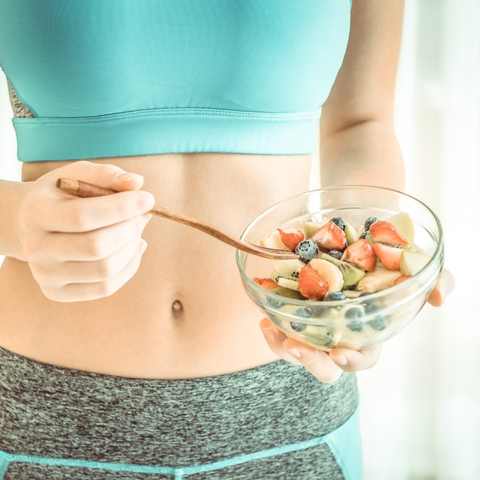
Your Daily Macros & Calories Following The Carb Cycling Meal Plan
Like any diet, the first step in creating a carb-cycling meal plan is calculating your total daily energy expenditure (TDEE). This is the number of calories your body needs to maintain its weight.
From there, we can add calories to build muscle or take them away to lose fat. Even on a carb cycling diet, everything comes down to calories in vs. out.
Everyone has individual calorie needs based on weight, body fat, and activity. There are many advanced formulas for calculating TDEE, but an easy calculation I like is multiplying your body weight by 14 to 16. It is simple and effective.
Using this formula, a moderately active 160-pound person would calculate their TDEE by multiplying 160 by 15 to get a TDEE of 2400 calories.
Theoretically, if they consistently ate 2400 calories, they would maintain their body weight. We will use this example for the meal plans in this article, but use your actual body weight to determine your TDEE.
Calories & Macros For Building Muscle:
Once we know the TDEE or maintenance calories, we can increase calories to improve strength and build muscle.
The trick is knowing how many additional calories to add. The calorie surplus is likely smaller than you may think. A 15-20% calorie bump above TDEE is an excellent starting point. An extra 15% to 2400 would give 360 extra calories in our example.
- 160lbs x 15 = 2400 calories
- 2400 x 15% (360) = 2760 calories
Here is where carb cycling gets unique. For the muscle-building carb cycling plan, we will keep calories and protein constant while fluctuating carbohydrates and fats. We will follow a high-carb plan on training days and a lower-carb plan on rest days. In our example, there will be five high-carb days and two low-carb.
As mentioned, protein intake will remain the same every day. Based on the most up-to-date research, consume .7-1 grams of protein per pound of body weight3. To keep it simple, we will consume 160 grams of protein daily, one gram per pound of body weight.
After calculating protein intake, all that is left is fat and carbohydrates.
On high-carb days, keep fat intake at 20%. All of the excess calories will come from carbs.
- Calories: 2760
- Protein: 160g (1g per pound of body weight)
- Fat: 60g (20% of total calories)
- Carbohydrates: 395g (excess calories)
On low-carb days, bump fat up to 35%. Again, all of the excess calories will come from carbs.
- Calories: 2760
- Protein: 160g (1g per pound of body weight)
- Fat: 105g (35% of total calories)
- Carbohydrates: 290g (excess calories)

Calories & Macros For Fat Loss:
Fat loss requires the opposite setup when compared to a muscle-building diet. Instead of eating more calories to create a calorie surplus, we reduce calories to create a deficit.
Aiming to lose one pound per week is a great starting point for most people. Although not a perfect science, reducing 3500 calories per week is equivalent to one pound of stored body fat. This means you need a daily calorie deficit of 500 calories below maintenance (500 x 7 = 3500 calories).
Remember, our TDEE was 2400 calories. Subtracting 500 calories from 2400 leaves us with 1900 calories (2400 – 500 = 1900).
Here is where things get a little tricky. Stay with me.
In our example, on average, a 1900-calorie diet would be required to lose one pound per week. Eating 1900 calories seven days a week would be 13,300 calories in total. However, our carb-cycling diet consists of five low-calorie/low-carbohydrate days and two high-calorie/high-carbohydrate days. But we still can only have 13,300 weekly calories.
We will distribute 13,300 calories between five low and two high days to make this work.
Let’s start with the high-carb days. To keep it as simple as possible, the high-carb days will be at maintenance calories, which in our example, is 2400.
Two days of high-carbs: 2400 x 2 = 4,800 calories
To determine the calorie intake for the other days, we must subtract 4,800 calories from our weekly 13,300. This equation looks like this: 13,300 – 4,800 = 8,500.
Our calculations show we have 8,500 calories to split up across our five lower-carb days, and 8,500 spread over five days comes out to 1,700 calories. If we keep protein at one gram per pound of body weight and fat intake at 20% of total calories, here is how it would break down.
5 Low Calorie/Low Carb Days:
- 1700 calories
- 160g protein
- 175g carbs
- 40g fat
2 High Calorie/High Carb Days
- 2400 calories
- 160g protein
- 325g carbs
- 50g fat
Most people respond best to having two high-carb days on consecutive days. Have the high-carb days around your most challenging workouts of the week.
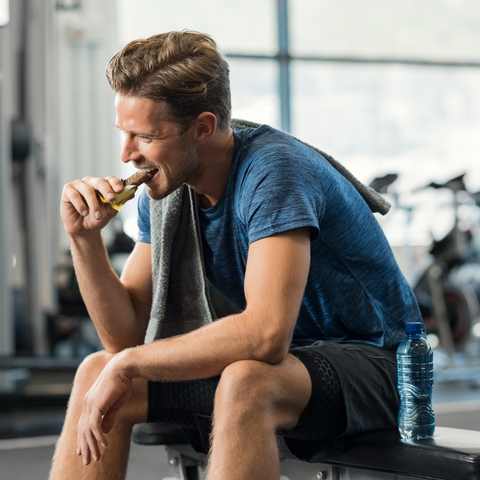
Your 7-Day Carb Cycling Meal Planning Grocery List
Here is everything you need for your 7-day bulking and 7-day cutting meal plans.
1. Protein Sources:
Lean meats, fish, and steak will make up your meat selections, while things such as Greek yogurt, eggs, and protein supplements make great protein sources to add to breakfasts and snacks.
| MEAT: |
| Chicken Breast |
| Chicken Thighs |
| 93% Lean Ground Beef |
| Turkey Breast |
| Sirloin |
| NY Strip |
| Pork Loin |
| Salmon |
| Can of Tuna |
| Cod |
| Haddock |
| Tilapia |
| DAIRY: |
| Low-Fat Greek Yogurt |
| Eggs |
| Provolone Cheese |
| PROTEIN SUPPLEMENTS: |
| Protein Powder (your choice) |
| Protein Bars (your choice) |
2. Carbohydrates Sources:
You’ll appreciate the diverse array of carbs you get to eat when carb cycling! This meal plan includes everything from whole-grain and garlic bread to rice and pasta and tons of great produce.
| BREAD: |
| Whole-Grain Bagels |
| Whole-Grain Wraps |
| Ezekiel Bread |
| Garlic Bread |
| BREAKFAST: |
| Multigrain Cheerios |
| Cream Of Wheat |
| Oatmeal |
| PANTRY: |
| White Rice |
| Brown Rice |
| Flavored Rice Cakes |
| Quinoa |
| Penne Pasta |
| Black Beans |
| Marinara Sauce |
| PRODUCE: |
| Sweet Potatoes & Russet Potatoes |
| Fruits (Apples, Bananas, Blueberries, Strawberries & Strawberry Jam ) |
| Veggies (Broccoli, Asparagus, Brussel Sprouts, Mixed Greens, Shredded Lettuce, Green Beans, Corn) |
3. Fat Sources:
Peanut butter, cream cheese, olive oil, and nuts make great additions to snacks and meals, helping you to feel more satisfied and stay full for longer. For the balsamic dressing, you can pick full fat or low fat, depending on your goals.
| DAIRY: |
| Butter |
| Cream Cheese |
| PANTRY ITEMS: |
| Olive Oil |
| Italian Dressing |
| Balsamic Vinaigrette Dressing |
| Almonds |
| Peanut Butter |
4. Drinks & Dessert:
One of the best parts about a carb cycling meal plan is that you get to enjoy a variety of drinks and partake in dessert! This type of flexibility is one of several reasons why adherence to carb cycling is so high.
| BEVERAGES: |
| Coffee |
| Almond Milk |
| Greens Juice |
| Orange Juice |
| DESSERT: |
| Frozen Yogurt |
| Ice Cream |
| Chocolate Chips |
Your 7-Day Carb Cycling Meal Plan For Muscle Building
For the carb-cycling muscle-building diet, we will keep calories consistent every day of the week. But, we will have high carbs on training days, and lower carbs on rest days.
The low-carb days will have higher fat intake to compensate for the calorie difference. Adjust the schedule so it aligns with how many days per week you work out.
Monday:
Daily nutrition breakdown: 2749 calories, 165g protein, 385g carbs, 61g fat
|
Breakfast: |
2 whole eggs 4 egg whites 80g oats 1 medium banana 8oz orange juice |
Nutrition: |
|
Lunch: |
4oz chicken breast 290g white rice 1 cup broccoli |
Nutrition: |
|
Dinner: |
6oz sirloin 12oz sweet potato 1 cup frozen yogurt |
Nutrition: |
|
Snack: |
1 scoop whey protein 8oz almond milk 1 medium apple 32g of peanut butter 4 flavored rice cakes |
Nutrition: |
Tuesday:
Total daily nutrition breakdown: 2754 calories, 162g protein, 396 carbs, 60g fat
|
Breakfast: |
3 whole eggs 1 medium banana 3 cups multigrain cheerios 8oz almond milk |
Nutrition: |
|
Lunch: |
Can of tuna 290g white rice 1 cup green beans 25g almonds |
Nutrition: |
|
Dinner: |
5oz salmon 4oz penne pasta 1.5 cups marinara sauce 1 cup of sweet corn |
Nutrition: |
|
Snack: |
1 scoop whey protein 8oz almond milk 1 medium apple 80g oats |
Nutrition: |
Wednesday:
Total daily nutrition breakdown: 2707 calories, 163g protein, 386g carbs, 59g fat
|
Breakfast: |
4 egg whites 150g low-fat Greek yogurt 80g oats 1 cup blueberries |
Nutrition: |
|
Lunch: |
4oz chicken breast 12oz russet potato 1 medium apple 10g butter |
Nutrition: |
|
Dinner: |
5oz wild-caught haddock 290g white rice 1 cup broccoli 1.5 cups ice cream |
Nutrition: |
|
Snack: |
1 scoop whey protein 8oz almond milk 1 medium banana 2 slices Ezekiel bread 32g peanut butter 2 tbsp strawberry jam |
Nutrition: |
Thursday:
Total daily nutrition breakdown: 2651 calories, 152g protein, 388g carbs, 56g fat
|
Breakfast: |
6 egg whites Large whole-grain bagel 2tbs cream cheese 1 cup blueberries 1 cup orange juice |
Nutrition: |
|
Lunch: |
4oz chicken breast 290g white rice 1 cup of broccoli 10g butter |
Nutrition: |
|
Dinner: |
250g quinoa 150g black beans Large green salad 2tbs low-fat balsamic vinaigrette dressing |
Nutrition: |
|
Snack: |
1 scoop whey protein 8oz almond milk 32g peanut butter 80g oats 1 medium banana |
Nutrition: |
Friday:
Total daily nutrition breakdown: 2727 calories, 156g protein, 393g carbs, 62g
|
Breakfast: |
1 scoop whey protein 8oz almond milk 1 cup blueberries 1 cup strawberries 20g chocolate chips 40g oats |
Nutrition: |
|
Lunch: |
4oz turkey breast 2 whole grain wraps 1 slice provolone cheese 50g shredded lettuce 1 medium apple |
Nutrition: |
|
Dinner: |
8oz sirloin 12oz russet potato 1 cup Brussels sprouts 1 slice garlic bread |
Nutrition: |
|
Snack: |
1 protein bar 1 medium banana 15oz Green Juice Smoothie |
Nutrition: |
Saturday:
Total daily nutrition breakdown: 2664 calories, 158g protein, 385g carbs, 99g fat
|
Breakfast: |
6 whole eggs 80g oats 1 medium apple |
Nutrition: |
|
Lunch: |
3oz chicken breast 12oz sweet potato 1 cup broccoli 10g butter |
Nutrition: |
|
Dinner: |
8oz NY strip 12oz russet potato Large green salad 2tbs Italian salad dressing |
Nutrition: |
|
Snack: |
1 protein bar 1 medium banana |
Nutrition: |
Sunday:
Total daily nutrition breakdown: 2666 calories, 164g protein, 286g carbs, 98g fat
|
Breakfast: |
4 whole eggs 3 cups multigrain cheerios 8oz almond milk 1 cup orange juice |
Nutrition: |
|
Lunch: |
5oz salmon 290g rice 1 cup broccoli 10g butter |
Nutrition: |
|
Dinner: |
8oz chicken thighs 8oz sweet potato Large green salad 2tbs Italian salad dressing |
Nutrition: |
|
Snack: |
1 scoop of whey protein 8oz almond milk 1 medium banana 32g peanut butter |
Nutrition: |
Your 7-Day Carb Cycling Meal Plan For Cutting
If you’re following a cutting workout and looking for a great diet to pair it with, this is for you!
The carb-cycling meal plan for cutting has us follow a low carb calorie restricted diet for five days. On the sixth and seventh days, we refeed with two days in a row of higher carbohydrates and higher calories. The refeed days are at the calculated maintenance calorie intake.
Aim to have the high-carb days around your most challenging workout of the week. Having your high-carb days back to back is the most critical factor.
Monday:
Total daily nutrition breakdown: 1647 calories, 158g protein, 172g carbs, 37g fat
|
Breakfast: |
1 whole egg 6 egg whites 60g oats |
Nutrition: |
|
Lunch: |
5oz chicken breast 145g white rice 1 cup broccoli |
Nutrition: |
|
Dinner: |
6oz pork loin 6oz sweet potato 1 cup green beans |
Nutrition: |
|
Snack: |
1 scoop of whey protein 8oz almond milk 1 medium banana 32g peanut butter |
Nutrition: |
Tuesday:
Total daily nutrition breakdown: 1716 calories, 161g protein, 175g carbs, 41g fat
|
Breakfast: |
2 whole eggs 4 egg whites 60g oats |
Nutrition: |
|
Lunch: |
1 can tuna 145g white rice 1 cup broccoli 1 medium apple |
Nutrition: |
|
Dinner: |
6oz 93% lean ground beef 6oz russet potato |
Nutrition: |
|
Snack: |
2 scoops whey protein 8oz almond milk 32g peanut butter 1 flavored rice cake |
Nutrition: |
Wednesday:
Total daily nutrition breakdown: 1709 calories, 164g protein, 175g carbs, 38g fat
|
Breakfast: |
225g low-fat Greek yogurt 80g oats |
Nutrition: |
|
Lunch: |
6oz cod 145g white rice 1 cup broccoli 10g olive oil |
Nutrition: |
|
Dinner: |
4oz chicken breast 125g quinoa |
Nutrition: |
|
Snack: |
2 scoops of whey protein 8oz almond milk 16g of peanut butter 1 medium banana |
Nutrition: |
Thursday:
Total daily nutrition breakdown: 1755 calories, 159g protein, 175g carbs, 42g fat
|
Breakfast: |
6 egg whites 2 packets cream of wheat 25g almonds |
Nutrition: |
|
Lunch: |
6oz chicken 145g white rice 1 cup broccoli |
Nutrition: |
|
Dinner: |
8oz sirloin Large green salad 2tbs light balsamic salad dressing |
Nutrition: |
|
Snack: |
1 protein bar 1 medium banana |
Nutrition: |
Friday:
Total daily nutrition breakdown: 1766 calories, 160g protein, 177g carbs, 46g fat
|
Breakfast: |
4 whole eggs 80g oats 1 cup blueberries |
Nutrition: |
|
Lunch: |
6oz chicken 6oz sweet potato 10g butter |
Nutrition: |
|
Dinner: |
6oz tilapia Large green salad 2tbs light balsamic salad dressing 125g black beans |
Nutrition: |
|
Snack: |
1 scoop whey protein 8oz almond milk 1 medium banana |
Nutrition: |
Saturday:
Total daily nutrition breakdown: 2392 calories, 160g protein, 326g carbs, 50g fat
|
Breakfast: |
4 whole eggs 80g oats 1 cup blueberries 1 cup orange juice |
Nutrition: |
|
Lunch: |
5oz chicken 12oz sweet potato 15g butter |
Nutrition: |
|
Dinner: |
5oz tilapia Large green salad 2tbs light balsamic salad dressing 290g white rice 125g black beans |
Nutrition: |
|
Snack: |
1 scoop whey protein 8oz almond milk 1 medium banana |
Nutrition: |
Sunday:
Total daily nutrition breakdown: 2342 calories, 160g protein, 325g carbs 46g fat
|
Breakfast: |
6 egg whites 3 cups multigrain cheerios 8oz almond milk 1 cup blueberries |
Nutrition: |
|
Lunch: |
1 can of tuna 290g white rice 15g butter |
Nutrition: |
|
Dinner: |
6oz chicken breast 10oz sweet potato 1 cup green beans 1 cup frozen yogurt |
Nutrition: |
|
Snack: |
1 scoop whey protein 8oz almond milk 1 medium banana |
Nutrition: |
What To Do After Following These 7-Day Carb Cycling Meal Plans
After following our 7-day carb cycling meal plan, you should have a really good feel for how the diet is set up. If you keep the calorie and macronutrient goals the same, you can start to mix and match different foods and recipes.
How Long Should You Follow a Carb Cycling Diet?
The good thing about carb cycling is you can follow it for as long as you’d like. If you enjoy having different carb goals throughout the week, you can adhere to a carb-cycling diet when cutting, following a bulking workout, or maintaining.
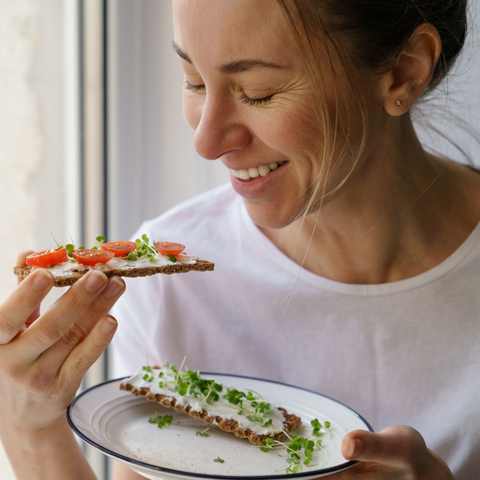
FAQs
If you have any final questions regarding a carb cycling meal plan, we’ll answer them here.
What should I eat on a high-carb day when carb cycling?
While on a high-carb day, focus on foods loaded with carbohydrates and low to moderate fiber. Examples include rice, rice cakes, pasta, bread, cream of wheat, bananas, apples, and fruit juice. High carb days would be good days to include high protein oatmeal or make a protein pancake recipe!
Is carb cycling good for fat loss?
Carb cycling can be an excellent option for fat loss as long as you remain in a weekly deficit.
How do you carb cycle for beginners?
If you are a beginner, start with a simple carb cycling plan with only high- and low-carb days.
What is the best carb cycle for fat loss?
The best carb cycle for fat loss is using the refeed method. To do this, have five low-carb days, followed by a two-day high-carb refeed.
How do I create a carb-cycling diet?
The best way to create a carb-cycling diet is to calculate your weekly calorie needs based on your goals. Once you do that, you can divide your weekly calories into low-carb and high-carb days.
What is the best schedule for carb cycling?
It is hard to say the best carb cycling schedule since different goals require different setups. That said, the best carb cycling schedule for you is the one that allows you to stick to your diet the best.
Carb Cycling Meal Plan: Flexible Dieting To Help You Hit Your Goals
As promised, you now have everything you need to follow a carb cycling meal plan, whether you want to lose weight or build muscle.
Remember, the fundamental principles of nutrition still apply. There is no getting around calorie balance, even when following a carb cycle meal plan. The numbers still need to make sense, and if you’re in it for weight loss, you must eat fewer calories so your total intake is below your maintanence.
But, following a carb cycling meal plan is an excellent way to keep things exciting and fun.
Interested in exploring other diets to determine which is best for you? Check out our 7-Day Keto Bodybuilding Meal Plan, 7-Day Carnivore Diet Meal Plan, or 16/8 Intermittent Fasting 7 Day Meal Plan for more great options!
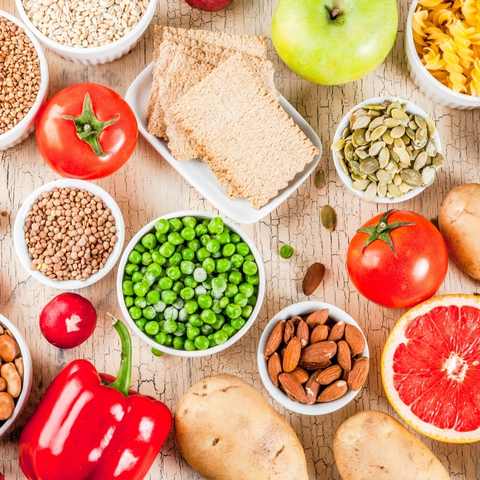
- Campbell BI, Aguilar D, Colenso-Semple LM, Hartke K, Fleming AR, Fox CD, Longstrom JM, Rogers GE, Mathas DB, Wong V, Ford S, Gorman J. Intermittent Energy Restriction Attenuates the Loss of Fat Free Mass in Resistance Trained Individuals. A Randomized Controlled Trial. J Funct Morphol Kinesiol. doi: 10.3390/jfmk5010019. PMID: 33467235; PMCID: PMC7739314.
- Hokken R, Laugesen S, Aagaard P, Suetta C, Frandsen U, Ørtenblad N, Nielsen J. Subcellular localization- and fibre type-dependent utilization of muscle glycogen during heavy resistance exercise in elite power and Olympic weightlifters. Acta Physiol (Oxf). doi: 10.1111/apha.13561. Epub 2020 Oct 4. PMID: 32961628.
- Morton, R. W., Murphy, K. T., McKellar, S. R., Schoenfeld, B. J., Henselmans, M., Helms, E., … Phillips, S. M. (2017). A systematic review, meta-analysis, and meta-regression of the effect of protein supplementation on resistance training-induced gains in muscle mass and strength in healthy adults. British Journal of Sports Medicine. https://doi.org/10.1136/bjsports-2017-097608

